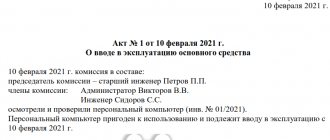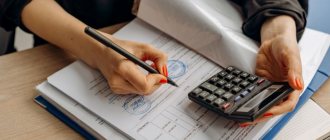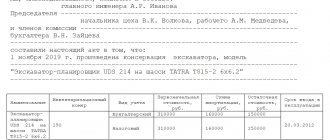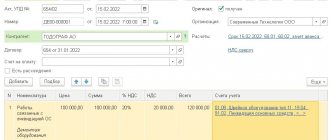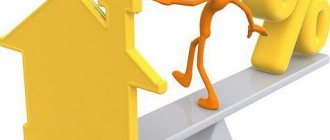Useful life
The calculation of depreciation of fixed assets is regulated by the Tax Code if a company, using depreciation deductions, reduces the income tax base. To correctly determine the useful life of an object (SPI), a classifier is needed. The directory states that machines for processing concrete belong to the fifth group, the service life is 7-10 years. Within this framework, you can select the accrual period.
If depreciation is needed for management accounting, the company can set this period itself. The shorter it is, the larger the amount of depreciation will be redistributed to costs, this can lead to an increase in product costs. Conversely, if the period is chosen to be very long, the equipment may fail before it is completely depreciated. Calculating depreciation of fixed assets involves different methods, but a company can choose only one of them. You can change the method once every five years.
Deductions begin from the next month after purchase. If Betoniya bought the machine in July, then the first accrual will be made in August.
Car depreciation in questions and answers
1. The organization took a long-term lease of a car in July 2022 and put it into operation in the same month. The car is listed on the lessee's balance sheet. From what month should depreciation be calculated?
Answer: Depreciation of a car is calculated from the month it was put into operation, i.e. from July 2022 (part 1, clause 51 of Instruction No. 37/18/6).
2. A passenger car is leased on a long-term basis for use in business activities. How is depreciation calculated?
Answer: As a general rule, the methods and methods of car depreciation are determined by the leasing agreement. If it does not indicate the amount of depreciation charges and (or) there is no information to determine their size, then only the linear method is used (part 2, clause 50, clause 53 of Instruction No. 37/18/6).
3. Does the lessor need to reflect depreciation charges on a long-term leased car in accounting, if it is taken into account on the lessee’s balance sheet?
Answer: No, it's not necessary. When a car is taken into account on the balance sheet of the lessee , he calculates the depreciation of the car and reflects depreciation charges in his accounting as part of production costs or sales costs (Part 3, Clause 56 of Instruction No. 37/18/6).
4. A passenger car taken on a short-term lease is listed on the lessor’s balance sheet and is used by the lessee as a service vehicle. Who shows depreciation charges in their books?
Answer: With short-term leasing (leasing term up to a year), the leased item (car) is listed on the lessor’s balance sheet. Depreciation on it is charged by the lessor (paragraph 3, part 1, clause 2, clauses 16 and 19 of NAS N73, part 2, clause 56 of Instruction No. 37/18/6).
The lessee reflects in its accounting the lease payment, which includes depreciation charges on the leased asset (Appendix 4 to Instruction No. 37/18/6).
5. The car is leased. Who calculates depreciation? How to reflect it in accounting?
Answer: Depreciation of the car is calculated and reflected in its accounting by the lessor.
Let me explain. When a vehicle is leased out, it is not disposed of. The car remains on the balance sheet of the lessor (part 1 of article 577, part 1 of article 593 of the Civil Code).
The accounting policy of the lessor determines the activity to which leasing relates. It could be:
- Current activity;
— other current activities;
- investment activities.
The accounting policy for the vehicle and the accrued depreciation account depend on the adopted accounting policy.
If leasing relates to current or other current activities, then the lessor records the car in account 01 “Fixed Assets”. In this case, depreciation is reflected:
— as part of expenses (account 20 “Main production”) — in case of classifying rent as current activities;
- in other expenses for current activities (subaccount 90-10 “Other expenses for current activities”) - if leasing is another current activity (part 1 clause 50, part 1 clause 56 of Instruction No. 37/18/6 , Appendix 4 to Instruction No. 37/18/6 (paragraph 6, part 1, paragraph 2, paragraph 19, paragraph 13, Instruction No. 102).
If the lease is classified as an investment activity, then the lessor’s car is accounted for in account 03 “Income-generating investments in tangible assets.” Car depreciation is included in expenses for investment activities (subaccount 91-4 “Other expenses”) (Appendix 4 to Instruction No. 37/18/6 (paragraph 3, part 1, paragraph 2, paragraph 14, paragraph 14 of Instruction No. 102) .
6. The organization received a used car free of charge from an individual. From what cost should depreciation be calculated?
Answer: From the original cost at which the car is recorded in the organization’s accounting (Appendix 2 to Instruction No. 37/18/6).
At the same time, for fixed assets received free of charge, the initial cost is determined based on their current market value on the date of acceptance for accounting as investments in long-term assets (Part 5, Clause 10 of Instruction No. 26).
7. The organization donated the car for free use. Does the lender need to charge depreciation?
Answer: It is necessary, because the car has not been removed from the depreciable property.
Under a contract of gratuitous use, one party undertakes to transfer the thing for temporary gratuitous use, and the second party undertakes to return it in the same condition, taking into account normal wear and tear (clause 1 of Article 643 of the Civil Code).
Consequently, the car remains on the balance sheet of the lender as part of depreciable property.
8. The car used in business activities was under repair from 05/07/2021 to 07/13/2021. Before the renovation, depreciation was calculated using the straight-line method. Do I need to charge it for the time of repair? If necessary, can it be done in the same way? How to take into account depreciation?
Answer: Depreciation must be calculated on a straight-line basis and taken into account as part of production costs or sales costs.
Let me explain. In this situation, the car repair lasted less than 3 months. In this case, the procedure for calculating depreciation does not change. During repairs, depreciation is calculated monthly using the same straight-line method. Deductions are included in production costs or sales costs (paragraph 2, part 1, clause 45 of Instruction No. 37/18/6, Appendix 4 to Instruction No. 37/18/6).
9. A completely damaged car was damaged in an accident. A third-party organization carried out restoration work, which is regarded as modernization. Is it necessary to review the useful life of a car and calculate depreciation? If yes, please explain using the linear method as an example.
Answer: Yes, after modernization, the useful life is revised and depreciation begins to accrue.
One of the reasons why the depreciation policy commission can revise the useful life of a fixed asset during the reporting year is modernization (Part 1, Clause 24 of Instruction No. 37/18/6).
Note! The possibility of revising the depreciation period from the beginning of the reporting year should be enshrined in the accounting policies of the organization.
During the modernization:
— technical and economic indicators change;
— the design and equipment do not change;
— the resource may increase;
- service life may be revised;
— the cost changes (Appendix 5 to Instruction No. 37/18/6).
As a general rule, modernization costs increase the cost of a fixed asset (paragraph 2, clause 14, part 1, clause 20 of Instruction No. 26).
The cost of the work of a third-party organization that carried out the restoration of the car in accounting forms its residual value, which must be depreciated.
Consequently, the depreciation policy commission reviews the useful life. With the linear method, the calculation of car depreciation and its accrual in accounting are made from the month following the month the car was put into operation after modernization (clause 5 of Appendix 1, Appendix 4 to Instruction No. 37/18/6).
10. A passenger car used for business was involved in an accident. The repairs were carried out by a third party from 02/05/2021 to 07/12/2021. Before the accident, depreciation was calculated using the straight-line method. How is depreciation calculated and accounted for during repairs?
Answer: It is calculated in the same way as before the accident - in a linear way. For March - May it is reflected in expenses and taken into account when taxing profits. For June and July - in other expenses for current activities and in expenses not taken into account when calculating income tax.
Note! Car depreciation for February is calculated as usual, despite the start date of repairs (02/05/2021). The countdown of the three-month period begins with the month following the date of the event (start of downtime, repair). This is due to the fact that a monthly norm is established, which is not broken down by day (part 2, clause 27 of Instruction No. 37/18/6).
For cars used in business activities, depreciation is accrued on a straight-line basis monthly over the useful life (paragraph 1, part 1, clause 45 of Instruction No. 37/18/6).
When the car is under repair, depreciation is calculated in the same way as before the repair. Depreciation rates do not change.
During repairs, depreciation charges are taken into account (Fig. 1) (part 1, clause 45 of Instruction No. 37/18/6):
In our case, the period of 3 months for the car to be repaired expires on 05/04/2021. This means that for March - May, depreciation is taken into account in expenses and when taxing profits, and for June and July - in other expenses for current activities and is not included in the costs taken into account when taxing profits.
Read this material in ilex >>*
* following the link you will be taken to the paid content of the ilex service
Nonlinear method
Can be used in tax accounting, but not in accounting. Does not apply to objects of 8-10 groups from the classifier, for example, real estate. The cost of fixed assets of one group is summed up, and depreciation is charged immediately to the entire group:
Deductions = Cost of the fixed assets group x Depreciation rate
The brick making machine belongs to the fifth group; the company has only one machine, so the calculation is carried out only for it. The depreciation rate for a brick making machine is 2.7. Depreciation is calculated every month and reduces the cost of the asset every month. In the first year, deductions will amount to 139,982.11 rubles, which is almost twice as much as with the first method. In the month following the moment when the total cost of the fixed assets group becomes less than 20,000 rubles, the company can write it off one-time.
Examples for 2022
Example 1 for linear method:
The company purchased a truck for 850 thousand rubles. His SPI is 6 years (6*12 months = 72 months).
Fill in 2 columns in the program:
- 1 - 850 thousand;
- 2 — 72.
Final online calculations:
Example No. 2 for the method of calculating by mileage:
The company purchased a vehicle with a standard mileage of up to 350 thousand km. Price - 450 thousand rubles.
In 30 days the car traveled 20,000 km. Depreciation is calculated for write-off in the primary operating period.
In the program, three columns are filled in - 1, 2 and 4 (450 thousand, 350 thousand and 20 thousand).
Final online calculations:
Reducing balance method
For the calculation, an accelerating factor from 1 to 3 and the residual value of the fixed asset at the beginning of the year are used. "Betonia" chose a maximum acceleration factor of 3.
Deductions = Residual value of fixed assets: SPI in months x Acceleration factor
500,000.00: 96 x 3 = 15,625.00 (rub.) - deductions in the first year of use (from August 2022 to July 2022).
500,000.00 - (15,625.00 x 12) = 312,500.00 (rub.) - residual value as of August 1, 2022.
Each year, contributions will decrease, from August 2022 to July 2023 they will be:
312,500.00: 96 x 3 = 9,766.00 (rub.)
If at the end of the depreciation period there remains an unwritten-off amount, it can be included in deductions for the last month or depreciation can be charged at 582 rubles before the amount is completely written off. Another option is to increase depreciation charges in the last year, paying not 582 rubles monthly, but 1552 (divide 18,626.45 rubles by 12 months).
Calculation of depreciation using the straight-line method - example
Let us explain with a specific example how the linear depreciation method is used in practice.
On March 18, 2020, a woodworking machine for furniture production was purchased from Gamma LLC and registered as a fixed asset at an initial cost of RUB 180,000.00. The useful life of the machine was set at 72 months, because This fixed asset belongs to the 4th depreciation group according to the Classification of fixed assets.
IMPORTANT! The value of assets classified as fixed assets in tax accounting is equal to 100 thousand rubles, and in accounting accounting - 40 thousand rubles. Read about the differences between accounting and tax accounting in the material “What applies to fixed assets of an enterprise.”
Let's calculate the amount of depreciation for one month:
Am = 180,000.00 x (1/72 × 100%) = RUB 2,500.00.
Since, with a linear month, depreciation starts from the month following the month the purchased machine was accepted onto the balance sheet, then starting from 04/01/2020, for 6 years (72 months), Gamma LLC will monthly expense a depreciation amount of 2 RUB 500.00
If you have access to ConsultantPlus, check whether you have correctly calculated and reflected depreciation in your accounting. If you don't have access, get a free trial of online legal access.
Write-off method based on the sum of years of use
An accelerated method that writes off most of the cost of the OS in the first years of use. Calculation of depreciation of fixed assets is carried out on the basis of the original cost and the sum of the remaining years of useful life.
Depreciation rate = Remaining SPI: Sum of SPI years x 100%
Sum of SPI years = 8 + 7 + 6 + 5 + 4 + 3 + 2 + 1 = 36
Depreciation rate (first year) = 8: 36 x 100% = 22.2%
Depreciation rate (second year) = 7: 36 x 100% = 19.4%
Deductions = Initial cost x Depreciation rate
500,000.00 x 22.2% = 111,111.11 (rub.) - the amount of depreciation for the first year;
111,000.00: 12 = 9,259.26 (rub.) - monthly deductions in the first year.
Transition from non-linear to linear depreciation method
If a non-linear depreciation method was initially used, and later it was decided to use a linear one (the Tax Code allows changing depreciation methods, but not more than once every 5 years), then accountants may have a lot of questions in connection with such a transition.
- What useful life is used in the calculation? When switching to the straight-line depreciation method, deductions are calculated based on the remaining useful life of the asset. This period must be determined on the 1st day of the month of the tax period, when the use of the linear method begins (paragraph 2, paragraph 4, article 322 of the Tax Code of the Russian Federation).
- What value of the object should be taken as the basis for the new method of calculating depreciation? When switching to the linear depreciation method, you need to remember that part of the cost of the fixed asset has already been depreciated, so the calculation uses the residual value, which is also determined at the beginning of the tax period (clause 4 of Article 322 of the Tax Code of the Russian Federation). This is the position of officials (letter of the Federal Tax Service of Russia for Moscow dated December 1, 2009 No. 16-15/125942, letter of the Ministry of Finance of Russia dated January 28, 2010 No. 03-03-06/1/28).
- What should you do if, when switching to the straight-line depreciation method, the period of actual operation exceeded the useful life of the object, but the cost of the fixed asset was not completely written off as expenses? In such a situation, it is necessary to charge depreciation of the object until its value is written off (letter of the Ministry of Finance of Russia dated July 21, 2014 No. 03-03-RZ/35549). In this case, the useful life is determined by the taxpayer in accordance with the provisions of paragraph. 2 clause 7 art. 258 of the Tax Code of the Russian Federation and taking into account safety requirements and other factors affecting the wear and tear of the object.
Write-off method in proportion to production
The calculation will require the initial cost of the OS, planned and actual performance. The brick making machine produces 450 units of paving slabs per hour. The company plans to use it 7 hours every workday. Over the entire period of operation in this mode the following will be produced:
450 pieces x 7 hours x 240 working days x 8 years = 6,048,000 (pieces)
Depreciation per thousand pieces = 500,000.00: 6,048 = 82.67 (rub.)
If the company produces 78,000 units of paving slabs in a month, the deductions will be:
78 x 82.67 = 6448.41 (rub.) - depreciation for the month.
This method allows you to take into account depreciation relative to actually produced products, but incorrect planning can lead to distortion of depreciation charges, so it is better to use it for operating systems with a small TPI. It is, of course, difficult to predict the future, but let’s assume that the machine worked very well and produced the planned volume of production in 7 years. Depreciation stopped accruing, its book value became zero.
Alexander Pyatinsky, chief accountant of LANIT OT Group:
“Calculating depreciation of fixed assets is a simple and effective planning tool in management accounting. The requirement to compare received income and expenses allows you to evenly distribute the financial result through depreciation. The choice of method depends on what business model is used in the company: - the linear method is suitable for companies with activities that are not subject to seasonal fluctuations; — writing off the cost in proportion to manufactured products may be suitable for those who enter the market with an innovative product; — when a company needs to recognize more expenses in the first years than in subsequent years, the reducing balance method is suitable. The chosen method must be fixed in the accounting policy and be consistent in its application. You cannot use different methods for the same type of asset. A common problem with depreciation is low-value fixed assets. Often monitors and laptops costing less than 40,000 rubles in accounting are written off as expenses rather than depreciated. If there are only a few such assets, this is not significant, but for companies where IT equipment plays an important role, this becomes a problem."
Calculation of depreciation of fixed assets in management accounting
The company compared different calculation methods:
- Linear turned out to be the simplest: write-offs are the same throughout the entire period.
- With the non-linear method, depreciation dragged on for ten years, until the residual value of the fixed assets became less than twenty thousand rubles, in order to write it off one-time.
- The reducing balance method allows you to write off the largest amount in the first year, but every year, in August, the amount of deductions decreases, this needs to be controlled.
- The write-off method based on the sum of years of useful use has the same drawback, but it, the only one of the accelerated ones, allows you to write off the entire amount proportionally during the self-employment period, without a balance in the last month.
- Write-off in proportion to manufactured products allows you to understand what the share of depreciation in the cost price is, but for equipment with a long period of time, it may not be suitable.
As a result, the linear method of calculating depreciation was chosen. The company chooses how to account for depreciation. You can record the accrual on paper, come up with a table in Excel, or use a ready-made solution. In the PlanFact service you can conveniently calculate depreciation. Every month the owner will see exact numbers in the financial reports:
- in the income statement - correct profit;
- on the balance sheet - the residual value of the fixed assets.
The balance sheet, which reflects the receipt of a loan and the purchase of a brick making machine, looks like this:
500,000 rubles (the initial cost of the brick making machine) are reflected in “Fixed assets” and “Long-term liabilities”. After accruing depreciation of 5,200 rubles, the cost of fixed assets in the balance sheet will change:
494,800 rubles is the residual value of the brick making machine. The amount of deductions can be seen in the income statement:
A sinking fund is not an abstract concept, but a special account, preferably with interest on the balance to cover inflation. The company can transfer money into it once a month or allocate a certain percentage of profits from each trade, periodically checking the income statement to control the size of the fund. If equipment requires replacement or repair, you can use money from the sinking fund to avoid taking out a loan.
conclusions
A car is recognized as a fixed asset if it is not intended for resale. Its useful life is determined and depreciation is charged.
In accounting, it is convenient to choose either a linear calculation method or proportional to the volume of work - by kilometer (based on mileage).
In tax accounting, you can choose a linear or nonlinear method.
For vehicles leasing, you can use an accelerated method of deductions using an accelerating coefficient.

